Installing a built-in dishwasher
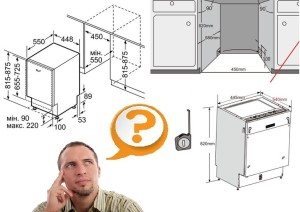 In principle, every good owner can install a built-in dishwasher with his own hands. Even if some stages of the work being carried out seem difficult to you, you can always contact a specialist. If you do at least part of the work yourself, this will save a lot of money. Read about what needs to be done in order to properly install the dishwasher yourself in this article.
In principle, every good owner can install a built-in dishwasher with his own hands. Even if some stages of the work being carried out seem difficult to you, you can always contact a specialist. If you do at least part of the work yourself, this will save a lot of money. Read about what needs to be done in order to properly install the dishwasher yourself in this article.
We determine the location and calculate the dimensions
The installation of a built-in dishwasher must be planned immediately, along with the entire kitchen interior - this will be an ideal option. Take my word for it, it is much more difficult to find a place and install a built-in machine in a finished kitchen, so the sooner you think about the need to install a dishwasher, the better. Plan ahead and draw a sketch of your future kitchen. Try to take into account the location and size of all household appliances.
In addition, draw on the sketch the location of all electrical and plumbing communications. In this case, each socket, each pipe outlet will be in its place and will not interfere with the installation of household appliances in the future. You can see an example of a kitchen sketch in the picture below.

Attention! The smaller the kitchen, the more carefully you need to calculate the size and location of each piece of furniture, including the dishwasher and, of course, reflect the calculations on the sketch.
Some people believe that before ordering furniture for the kitchen, you need to buy household appliances, and only then, based on their sizes, make a drawing of the future set. This is not to say that this is a wrong approach, but rather inconvenient and expensive.
- Firstly, to buy all the equipment at once, you need a lot of money at once, and then almost immediately pay for the kitchen furniture.
- Secondly, the purchased equipment will need to be stored somewhere while the kitchen interior is being formed, and this may take several months.
- Thirdly, even if you buy equipment in advance, this also does not guarantee that the furniture makers who will make the set will not miscalculate the dimensions somewhere.
In general, experts say this: first look at the model of a built-in dishwasher at a retail outlet, measure its exact dimensions, and do the same with the rest of the built-in and non-built-in appliances. Next, give all the dimensions along with the sketch to the furniture makers; if they miscalculate somewhere, then you can try to correct this shortcoming by purchasing smaller equipment. For a built-in dishwasher, do the calculations like this.
- For example, a built-in dishwasher has dimensions WxHxD 450x820x550 mm.
- You will need to allocate space for the cabinet into which installation will be carried out, taking into account the thickness of the material.
- You also need to leave a gap of at least 5 mm between the walls of the dishwasher and the walls of the cabinet.
As a result, for example, the total thickness of the material (on both sides) is 20 mm, plus a 5 mm gap (on both sides), which means we add 450 + 30 = 480 mm to the width - this is the final width of the cabinet with the dishwasher. We leave a gap in height only at the top, but take into account the height of the legs.That is, the height of the legs is 60 mm, we add the total thickness of the material 20 mm and a gap of 5 mm, we get 820+60+20+5=905 mm - the minimum height of a cabinet with a dishwasher.
When calculating the depth of the dishwasher, it is necessary to leave space for hoses and electrical wires, about 80-100 mm; the cabinet may not have a back wall, so there is no need to include the thickness of the material in the calculation. We get 550 mm+100 mm=650 mm. As a result, the dimensions of the cabinet with a built-in dishwasher will be at least WxHxD 480x905x650 mm. Successful connection and installation of the “dishwasher” entirely depends on how correctly you calculate everything.
Important! When calculating the size of the cabinet for a built-in dishwasher, do not forget about the facade; you need to look at how it will be installed and what features exist depending on the “dishwasher” model.
Preparing tools and components
Before connecting the dishwasher with your own hands, you need to prepare tools and components. The composition of these tools and components will depend on the features of the kitchen unit, the removal of communications and other factors. It is best to select everything you need immediately before installing the “dishwasher”, when there is a clear plan, a ready-made sketch and a partially formed interior. Approximately the following tools may be required:
- small adjustable wrench;
- flat and Phillips screwdrivers;
- tape measure (preferably laser);
- pliers;
- perforator;
- screwdriver;
- chisel.
As you can see, the list is small. Indeed, to install a “dishwasher” you don’t need any special tools, but you may need quite a lot of components.
- European sockets.
- Socket boxes.
- Copper two-millimeter cable with three cores.
- Tee for metal-plastic water pipe.
- Tangit type fumka.
- Tap on the inlet hose.
- Difavtomat.
- Set of rubber gaskets.
- Siphon with at least two outlets for drain hoses.
- Set of plastic clamps.
Sockets, a circuit breaker and a wire will be required if you are preparing electrical communications for kitchen appliances. Take sockets of the highest quality possible, with protection from moisture. Read the article on how to choose the right outlet. How to choose and install a socket for a washing machine. Although this text is about sockets for washing machines, the features of choosing a socket for dishwashers are absolutely identical.
Note! During the work process, the list of components can be significantly expanded. For example, if you decide to protect your dishwasher from the risks associated with the operation of the electrical network, you may need a stabilizer.
Preparing communications
It's no secret that a built-in dishwasher needs a stable connection to the electrical network, a connection to the water supply (sometimes to both hot and cold water at once) and sewerage. It is better to prepare these communications at the very beginning of kitchen renovation. Let's start with electrics.
- Using a hammer drill and a chisel, we tap the wall for the electrical wiring.
- In the electrical panel we draw a three-wire wire and install the automatic switch.
- We connect a pre-prepared copper wire to the difavtomat and pull it into the kitchen, through a grooved channel to the location of the socket box.
- We hollow out a niche for the socket box, install it and remove the wire.
- We disassemble the moisture-resistant socket, connect it to the wires and screw it in place.
At first glance, nothing complicated, but in practice problems may arise, so if you do not have experience in handling electricity, contact a specialist. The connection to electricity has taken place, now it’s time to install the wiring for the water pipes. First, figure out how you will connect your dishwasher to hot and cold water or just cold. Most often, craftsmen connect “dishwashers” only to cold water - this is best.
- At the end of the outlet of the cold water pipe, install a tee (or a tee with a tap).
- We get two free leads, one will go to the sink faucet, and to the other we will connect the dishwasher inlet hose.
- All threaded connections must be taped with a foam tool to ensure the connection is as reliable as possible.

We will connect the dishwasher to the sewer system last after the sink and siphon have been installed. All we have to do is connect the drain hose to the siphon outlet, and we can complete connecting the dishwasher in a few minutes.
The nuances of installing a dishwasher
It's time to connect the dishwasher and place it in place. First of all, you need to place the dishwasher closer to the cabinet and you can start connecting the communications. First, we connect the drain hose to the siphon outlet with our own hands. At the same time, make sure that the requirements are met, clearly illustrated in the picture below.

Next, we connect the inlet hose to the previously prepared outlet and you can put the dishwasher in the cabinet. Carefully, so as not to damage the hoses, push it in there, and last of all, hang the front part of the cabinet directly on the “dishwasher” door, as shown in the figure below.In general, the connection is complete.
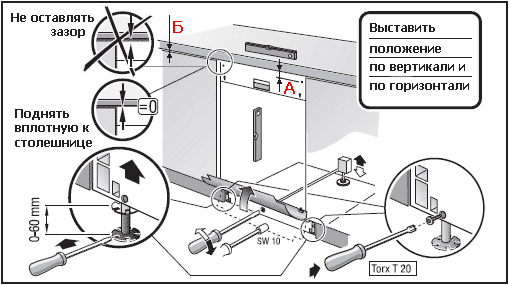
Note! Hanging the front part on the door of a built-in dishwasher with your own hands is quite simple. There are special fastenings into which the facade is inserted and then tightened using fasteners.
In conclusion, we note that connecting a built-in dishwasher and installing all the necessary communications can take a lot of time. But if you make the connection yourself, you will save a tidy sum, which you can use not only to celebrate the successful renovation of your kitchen, but also to buy something for that kitchen. Happy dishwasher repair and installation!
Interesting:
Reader comments
- Share your opinion - leave a comment
Categories
Washing machine repair


For buyers

For users

Dishwasher

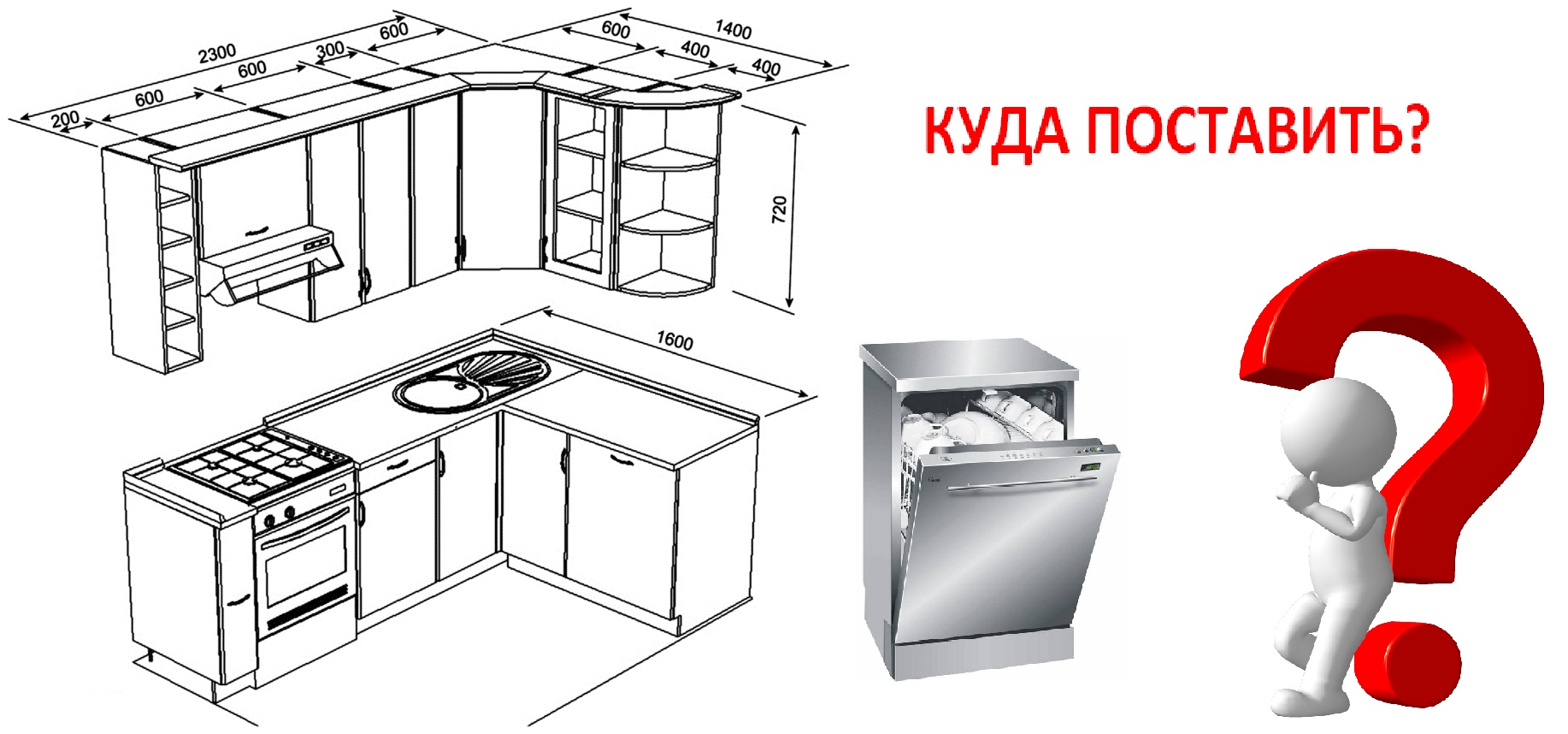
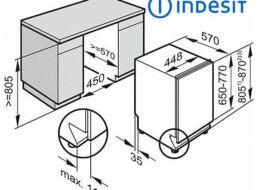


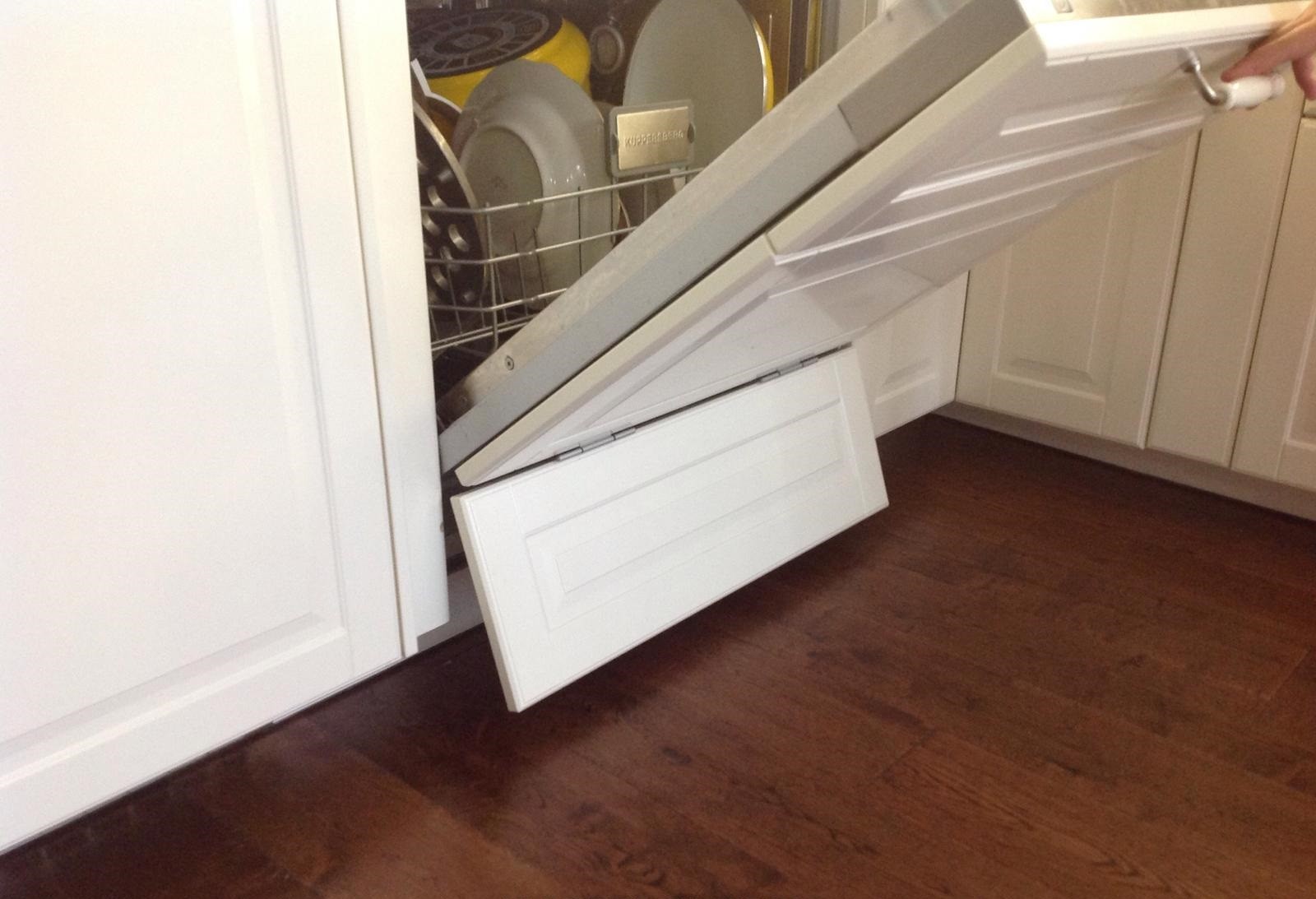
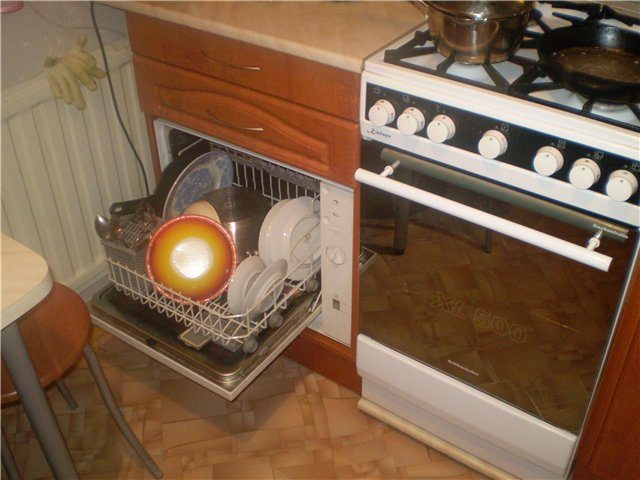










Add a comment